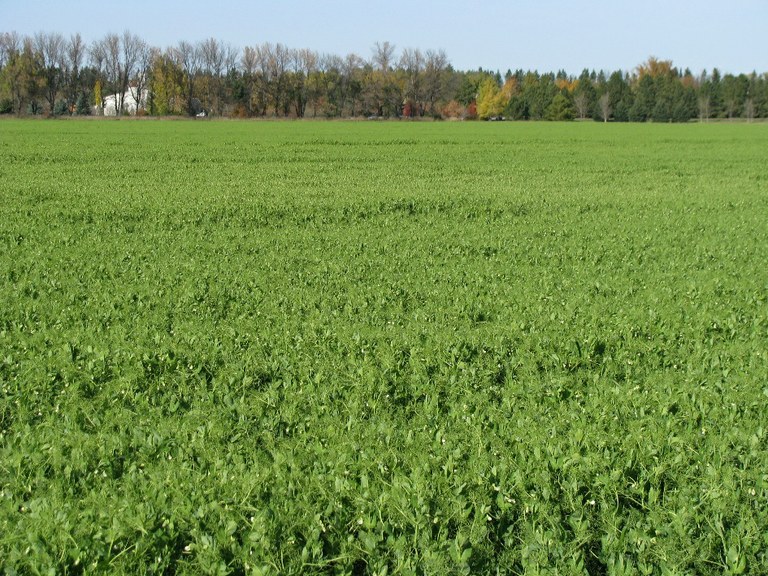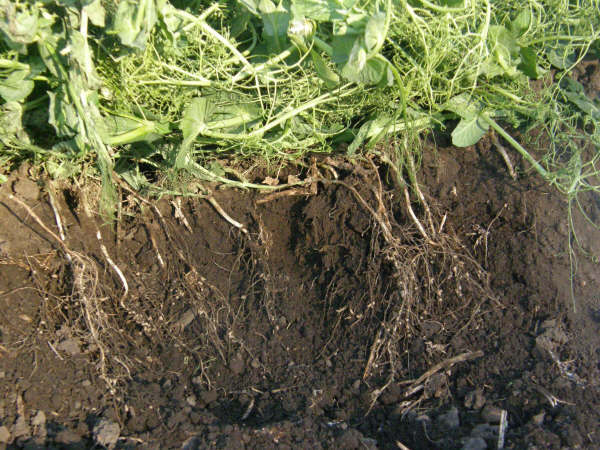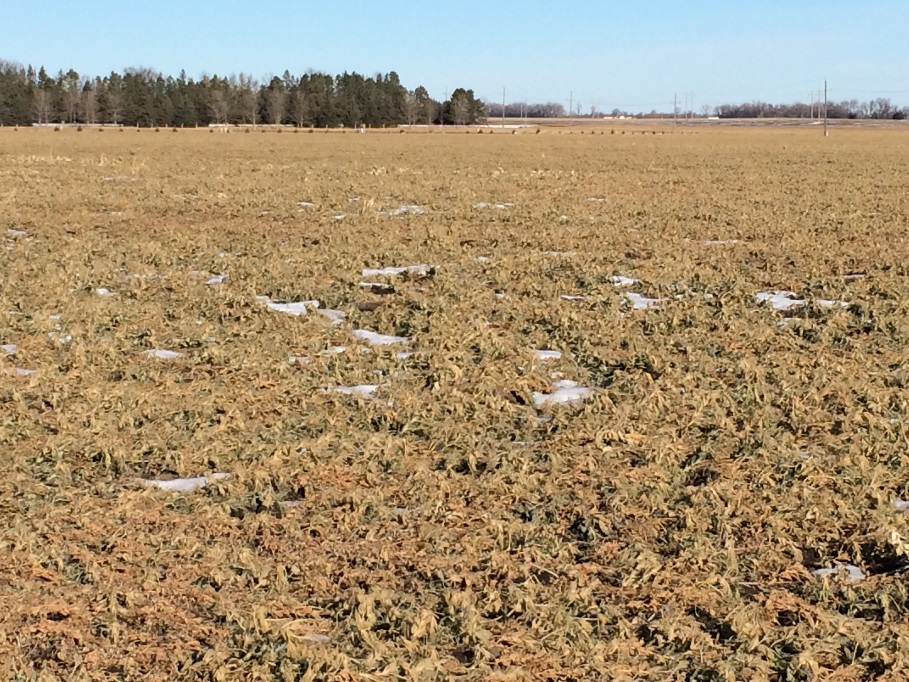Field Pea Relay Cover Crop
In recent years there has been a renewed interest in the use of cover crops as a means to achieve an array of benefits. The potential benefits are broad in scope and include the basic benefit of providing cover to prevent erosion along with building soil organic matter, maintaining soil biological activity, enhancing nutrient cycling, and numerous others benefits. One of the primary challenges of realizing these benefits is actually getting a cover crop established within a timeframe that allows the cover crop to do its job.
Here at the CREC we have used a non-traditional practice to achieve a cover crop. The cover crop practice we are using is promoting the growth of volunteer plants in a field pea field after harvest is complete. Harvest of field pea like many other crops results in some degree of harvest loss whether it be at the header or from seed thrown out the back of the combine. Generally peas are grown in regions of the state where no-till is the primary tillage practice. When tillage does not occur the pea seeds lost at harvest will either germinate on the surface and die or may only develop a weak plant. At the CREC, field pea has been an important crop among the rotations practiced for the production of foundation-grade seed. Conventional tillage is mostly used in our seedstocks program in part due to the need to foster volunteer seeds to ensure seed purity in later years of the rotation. We have found that when we lightly disk the peas soon after harvest, a high percentage of the seeds germinate and establish a vigorous plant. The resulting volunteer field pea plants often create a vibrant cover crop that has adequate time to develop and produce varied benefits since peas are typically harvested in late July to early August.

Pea relay cover crop, October 2010. (Notice trees in background.)
We call this approach a pea relay cover crop. Since the early 2000s the CREC’s seedstocks program has strived to perform a light tillage operation soon after pea harvest to promote the volunteer peas and the resulting cover crop. The overall volunteer pea stand density, above- ground biomass and nitrogen within that biomass have varied through the years. These variations have been primarily influenced by fall precipitation, seed harvest loss and the time for growth until temperatures consistently reach the mid-twenties. Generally we have documented that this cover crop has produced above-ground biomass yields of 1,752 lbs per acre dry matter with yields ranging from 912 to 2,231 lbs. Based on review of the nodules, the field pea plants would appear to be actively fixing nitrogen. Analysis of the nitrogen levels in the biomass collected would indicate an average nitrogen accumulation of 69 lbs per acre with levels ranging from 36 to 88 lbs of N.

Nodulation of pea roots from volunteer plants of pea relay cover crop.
By implementing some limited practices (e.g. timely light tillage), fields at the CREC that have produced a foundation-grade of seed have also resulted in production of additional organic matter, some level of additional biologically-fixed N and maintained soil biological activity throughout the growing season.
Blaine Schatz
CREC Director and Agronomist

Pea relay cover crop at CREC on December 7, 2015.


